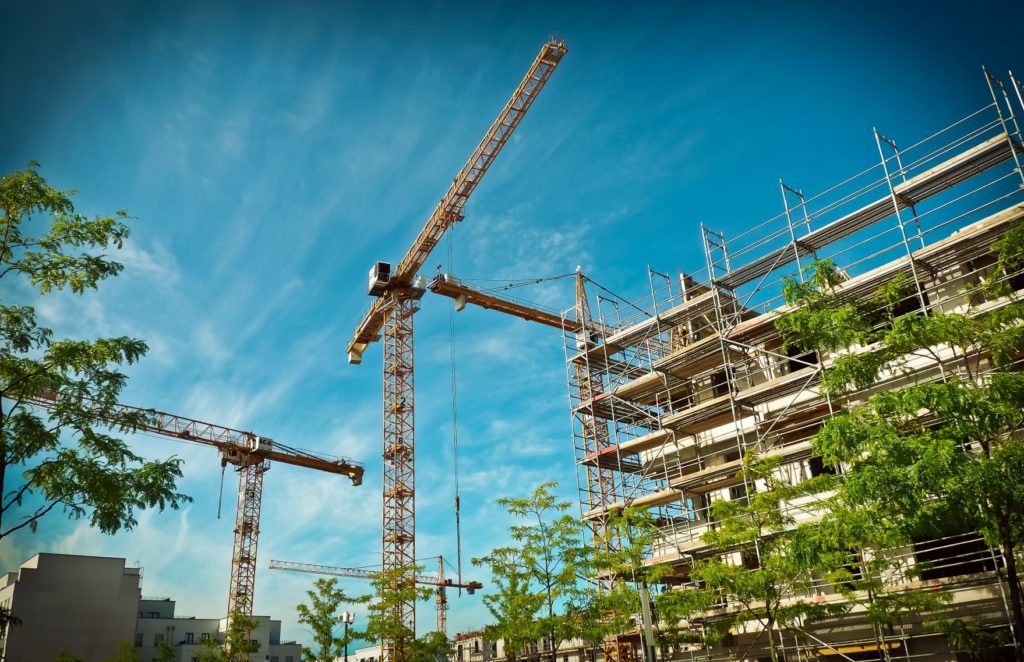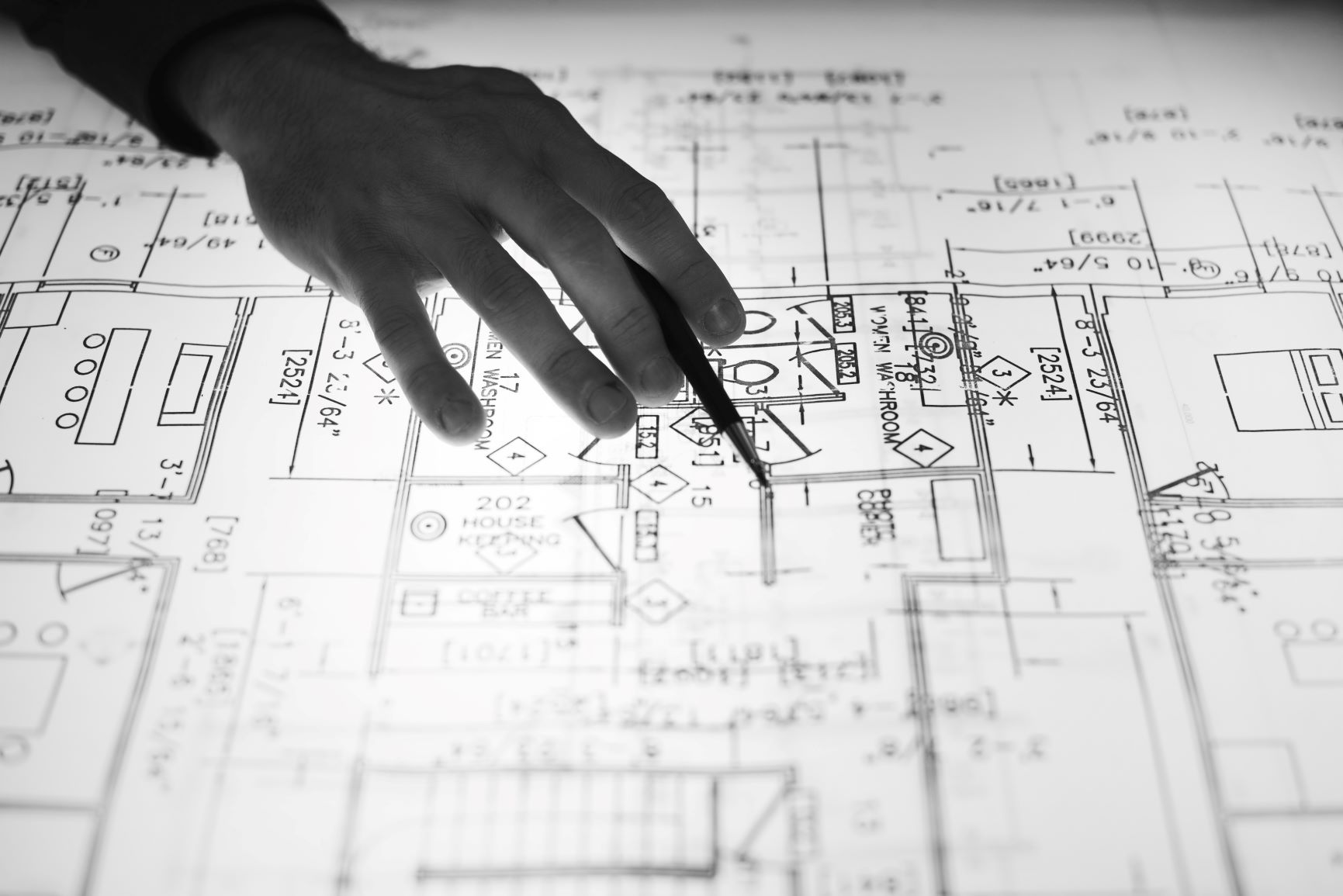The Rise of Green Technology in Construction
Green building technology has become one of the hottest trends in construction.
The benefits of a green technology application in construction are far-reaching and comprehensive, offering significant advantages when used in new facilities as well as existing structures.
Green technology makes buildings more energy-efficient and sustainable, so they have a lower carbon footprint and a reduced impact on the environment.

Builders, building owners, and tenants all realize considerable benefits from the application of green construction technology.
The primary way that green technology benefits are achieved is through greater energy efficiency.
In new buildings, green building construction plays a role in every phase of development.
Every aspect of the structure, including siting, design, construction materials, and the systems used to run and maintain operations are chosen to be as sustainable and energy-efficient as possible.

Thirty to forty percent of a commercial building is typically unoccupied at any given time.
Green building technology makes use of motion detectors, RFID scanners, access card readers, and other sensors to monitor the occupancy status of building sectors.
Whenever an area of a structure becomes unoccupied, green technology automatically shuts off lights and adjusts HVAC, cooling, heating, and ventilation options.
Building owners can realize as much as 30% savings in their energy expenses by eliminating unnecessary energy use in this manner.
Numerous studies have documented cases of the “sick building syndrome” that can create an unhealthy work environment in commercial buildings, particularly older buildings and those located in hotter climates where ventilation issues are a concern.
When HVAC systems are constantly left on, they can accumulate condensation that allows unhealthy mould spores to develop.
Energy-efficient green building solutions can automatically turn off HVAC systems when not needed in order to maintain the correct temperature and humidity for optimum health.

Advanced software and sensors can be put in place to monitor the ventilation system to prevent CO2 from underground garages from circulating throughout the building.
Below are the twelve most sustainable construction technologies used in green construction.
Solar power
Solar power has been increasingly exploited as a sustainable construction technology.
In green construction, it is utilized in two ways.

One pertains to active solar power and the other is passive solar power.
Active solar power is the use of functional solar systems that absorb the sun’s radiation to cater for heating and electricity provision.
It reduces the need for the use of electricity or gas.
The upfront installation costs are higher but in the long-term, it saves on energy bills and aids in reducing greenhouse gas emissions from non-renewable energy sources like fossil fuels.
On the other hand, passive solar power is a design that uses the sun’s rays to warm homes through the strategic placement of windows and the use of heat-absorbing surfaces.
The windows let in energy and the heat absorbed reduces the need for warming the house during cold periods such as winter.
Biodegradable materials
The use of biodegradable materials is an eco-friendly means of making construction sustainable.
Most traditional construction methods lead to the accumulation of waste products and toxic chemicals, the majority of which take hundreds of years to degrade.
And even if they degrade, it contaminates and harms the environment.
Biodegradable materials such as organic paints, therefore, aid to limit the negative impacts on the environment as they easily breakdown without the release of toxins.
The use of biodegradable materials for building foundation, walls and insulators are also part of sustainable construction technologies.
Green insulation
Insulation is among the greatest concerns when it comes to construction of buildings and homes.
However, most people don’t know that insulators are simply wall filters which don’t need to be made from expensive and highly finished materials.

On this basis, the use of green insulation has proven to be a sustainable construction technology as it eliminates the need for high-end finishes made from non-renewable materials.
Green insulation offers a solution by making use of old and used materials such as denim and newspaper.
In other words, it utilizes recycled material to line the walls.
The use of smart appliances
Homes and commercial buildings consume most of the world’s energy and for this reason; it has necessitated the use of smart appliances as part of sustainable construction technologies.
The sustainable construction technologies emphasize the installation of energy saving and self-sufficient appliances.
SmartGrid dishwashers, refrigerators and washing machines are examples of such sustainable technologies.

The technology is oriented towards establishing zero-energy homes as well as commercial buildings.
Cool roofs
Cool roofs are sustainable green design technologies which aim at reflecting heat and sunlight away.
It aids in keeping homes and buildings at the standard room temperatures by lowering heat absorption and thermal emittance.

The design makes use of reflective paints and special tiles which absorb less heat and reflect away most of the solar radiation.
For instance, cool roofs can reduce temperatures by more the 50 degree Celsius during summer.
Cool roofs, therefore, minimize the dependence on air conditioning and in turn, reduce energy use which translates into decreased cumulative greenhouse gas emissions from power plants.
Sustainable resource sourcing
Sustainable resource sourcing as the name suggests is a prime example of sustainable construction technology because it ensures the use of construction materials designed and created from recycled products and have to be environmentally friendly.
In most cases, agricultural wastes or by-products are used to produce construction materials.
Overall, the materials are remanufactured, recycled, recyclable, and obtained from sustainable sources.
Low-energy house and Zero-energy building design
Sustainable construction technologies typically include mechanisms to lessen energy consumption.
The construction of buildings with wood, for instance, is a sustainable construction technology because it has a lower embodied energy in comparison to those build of steel or concrete.
Sustainable green construction also makes use of designs that cut back air leakage and allows for free flow of air while at the same time using high-performance windows and insulation techniques.

These techniques are meant to reduce the dependence on air conditioning and interior heating.
Further, the strategic placement of windows is another technique that encourages day-lighting thereby minimizing the need for electric lighting in the course of the day.
The use of renewable energy such as solar for lighting and water heating is also part of a low-energy house and zero-energy building design.
The initial costs of setting up zero-energy buildings may be high, but they pay off in the long-term.
Electrochromic Smart Glass
Electronic Smart Glass also constitutes one of the technologies in sustainable construction.
The electronic smart glass is a new technology that works particularly in summer periods to shut out the harsh heat of solar radiation.

The smart glass uses tiny electric signals to slightly charge the windows to change the amount of solar radiation it reflects.
It is incorporated into the buildings control system, therefore, allowing users to choose the amount of solar radiation to block.
With this technology, homes and commercial buildings can save a lot on heating, ventilating, and air conditioning costs.
The smart glass is still being perfected and is soon set to be fully used in sustainable construction as a smart energy-saving technology.
Water efficiency technologies
There are several water efficient technologies used, which are all part of sustainable construction technologies.
Essentially, the technologies encompass re-use and application of efficient water supply systems.
Examples include the use of dual plumbing, greywater re-use, rainwater harvesting and water conservation fixtures.
These methods ensure that water is adequately managed, recycled and used for non-portable purposes like washing cars and flushing toilets.
Dual plumbing, for instance, decreases sewer traffic and enhances the potential of re-using water on-site.
On the other hand, rainwater harvesting provides water for multi-purpose usage and might also be stored for future use.
In general, the water efficiency sustainable construction technologies lower water usage costs and help in water conservation.
In urban areas, the technologies intend to lower water wastage by 15% to address freshwater shortages.
Sustainable indoor environment technologies
The health and safety of the building occupants are fundamental and must be guaranteed during the construction of any building or home.
As such, sustainable indoor technologies are mandatory for green construction.
The materials used have to ensure green safety standards which include hazardous free elements, non-toxic materials, low volatile emissions, and moisture resistance.
For instance, materials from cork, wood and bamboo are naturally sourced and do not have any toxic, irritating or carcinogenic elements.
The use of materials with low VOCs also enhances IAQ and limits exposure to health-threatening chemicals such as vinyl, phenol-formaldehyde and lead.
Self-powered buildings
The advancement of constructing self-powered buildings is an art of sustainable construction technology.
The reason is based on the fact that self-powered buildings bring about the realization of zero-energy construction.

The buildings are built such that they are able to generate sufficient power to support their own energy needs and even direct surplus energy back into the power grid.
In most cases, wind power technology is used and it is highly common in skyscrapers whereby wind turbines are mounted at the rooftops.
The constant and heavy air currents at higher altitudes propel the turbine blades which generates the power requirements for the building.
Rammed Earth Brick
Rammed earth brick is an ancient construction technology which has lately been re-introduced to cater for the demands of environmental sustainability.
The technique uses sustainably sourced raw materials. Due to technological advancements, the process of building a rammed-earth structure has been made easier but it still follows the ancient preparation process.
Moist earth mixture and hard substances like gravel or clay are mixed with stabilizing elements such as concrete and compacted to create dense, hard walls.

The sourcing and formation process of rammed-earth bricks makes it ideal for sustainable construction as it lessens environmental impacts and the material can equally stabilize the temperature of a building.
Rammed-earth structures contribute to fewer emissions and ensure the buildings remain cool in the summer and warm in the winter.
We are grateful to Ujjwal Goel, MD, Teraciel Engineering and Contracting, for this article. Ujjwal concludes:
“Thoughtfully created design and construction leave a legacy for future generations to enjoy. We have a responsibility to recognise that what we build today should endure and enhance the lives of those who come after us.
“The future development path at Teraciel Group is focused on the requirements of conscious and sustainable development by ensuring, inter alia, effective environmental policies and regulations, the application of best available technology, the development and support of strong environmental institutions both externally and internally, and advocacy campaigns for behavioural change.
“Great design and construction shouldn’t come at an environmental cost, but rather work in a sustainable relationship with the environment and make minimal impact. At Teraciel Group, our profitability is calculated based on the achievements of our triple bottom line objectives and Teraciel Engineering and Contracting (TEC) is a flag-bearer for our endeavour to be a leader in providing sustainable construction methods and sustainable, high-quality buildings”.








